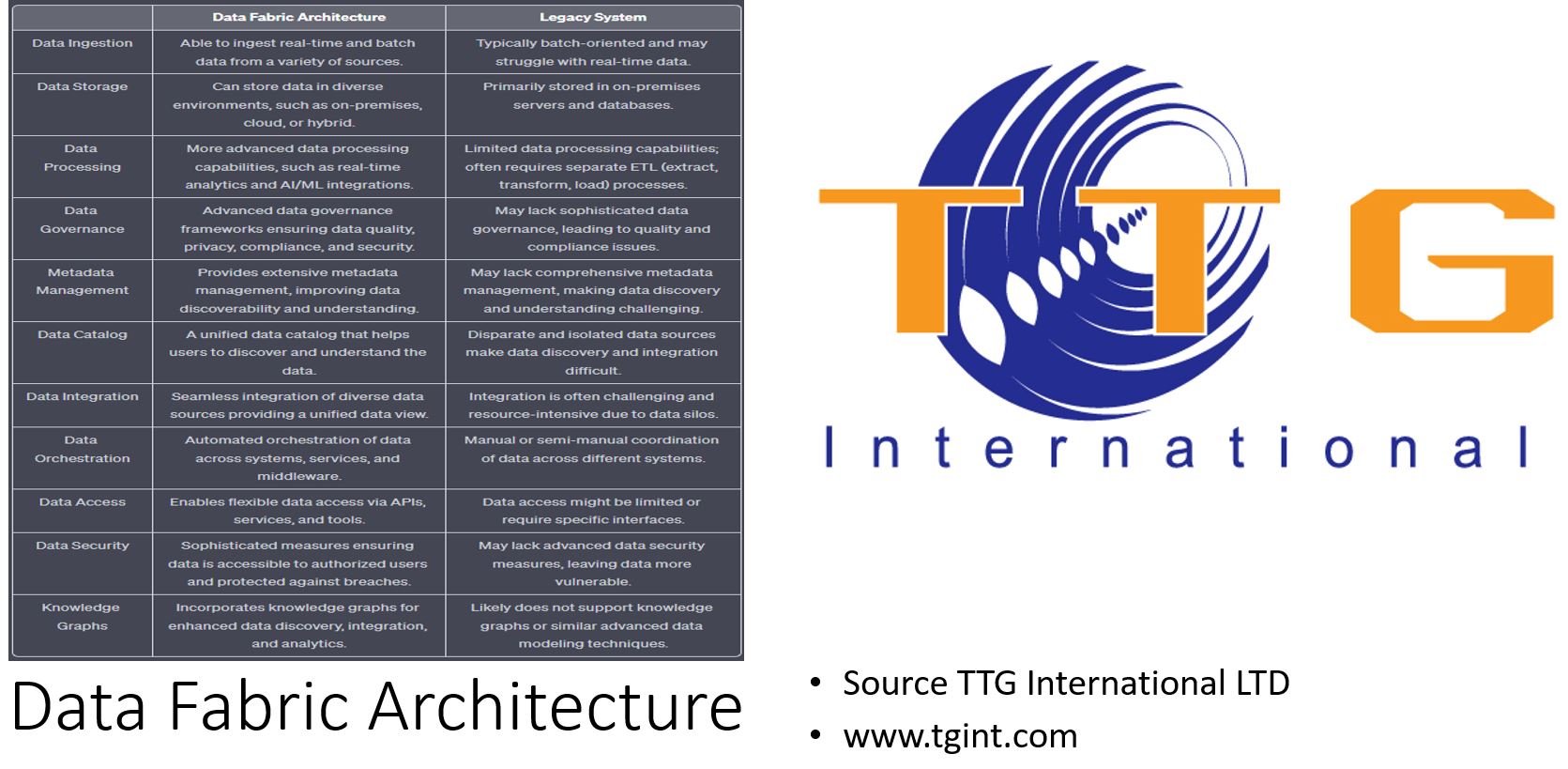Introduction
In the era of big data, businesses are facing unprecedented challenges in managing and harnessing the potential of their data. Traditional data management approaches often fall short in addressing issues of data integration, governance, and scalability. This is where Data Fabric comes into play. In this article, we will delve into the concept of Data Fabric, explore its core principles, and understand how it differentiates from traditional data management approaches like data lakes. We will also examine the key characteristics and benefits that make Data Fabric the future of data management.
Definition and Core Principles of Data Fabric
Data Fabric can be defined as a comprehensive data management architecture designed to address the challenges of messy, siloed, and inaccessible data. It acts as a unifying layer that seamlessly integrates data from multiple sources, regardless of its structure or location. The core principles of Data Fabric include:
Unified Data Integration
Data Fabric provides a unified approach to integrating data from diverse sources, including on-premises systems, cloud environments, and external data providers. It enables businesses to bring together structured and unstructured data in a cohesive manner.
Data Abstraction and Virtualization
Data Fabric abstracts the underlying complexity of data sources and provides a virtualized layer that allows data to be accessed and utilized without the need for physical movement or duplication. This enables faster data access and reduces data redundancy.
Metadata Management
Data Fabric emphasizes the collection and analysis of metadata, which provides contextual information about the data. By leveraging metadata, businesses can gain insights into data lineage, quality, and usage, facilitating better decision-making and governance.
Differentiating Data Fabric from Traditional Data Management Approaches
While traditional data management approaches like data lakes focus primarily on storing and centralizing data, Data Fabric goes beyond that by providing additional capabilities, including:
- Seamless Integration: Data Fabric offers seamless integration with various data sources, applications, and tools, allowing for real-time data processing, analysis, and insights. Unlike data lakes, Data Fabric is designed to easily integrate with existing infrastructure and software systems.
- Improved Governance: Data Fabric incorporates robust governance mechanisms, ensuring data security, privacy, and compliance. It enables organizations to enforce data policies, track data lineage, and establish data access controls across the entire data ecosystem.
- Scalability: Data Fabric is built to scale effortlessly as data volumes and complexity increase. It can handle diverse data types, support high-speed data processing, and adapt to changing business needs, making it a future-proof solution for data management.
Key Characteristics and Benefits of Data Fabric
Data Fabric offers several key characteristics and benefits that make it an attractive option for businesses:
- Seamless Integration: Data Fabric enables the integration of data from disparate sources, systems, and cloud environments, providing a unified view of data for analysis and decision-making.
- Improved Governance: With Data Fabric, organizations can enforce data governance policies consistently, ensuring data security, compliance, and privacy across the entire data lifecycle.
- Enhanced Scalability: Data Fabric allows businesses to scale their data infrastructure effortlessly, accommodating increasing data volumes and evolving business requirements.
- Real-time Insights: Data Fabric facilitates real-time data processing and analysis, empowering organizations to derive actionable insights faster and make data-driven decisions.
- Agility and Flexibility: Data Fabric provides the agility and flexibility required in today’s rapidly changing business landscape, enabling organizations to respond quickly to market dynamics and innovation opportunities.
Conclusion: Data Fabric represents a paradigm shift in data management, offering a comprehensive solution to the challenges posed by traditional approaches. Its seamless integration, improved governance, scalability, and other key characteristics make it the future of data management. By adopting Data Fabric, businesses can unlock the true potential of their data assets, gain valuable insights, and drive innovation in the digital age.
Moreover, Data Fabric brings additional benefits to organizations:
- Data Democratization: Data Fabric empowers both technical and non-technical users to access and utilize data without relying heavily on IT departments. Business users can derive insights from corporate data more quickly, enabling faster and more informed decision-making.
- Agility and Innovation: By reducing the reliance on IT departments for data processing and analysis, Data Fabric fosters a culture of agility and innovation within organizations. Business users can explore data, experiment with new ideas, and drive innovation at a faster pace.
- Cost-Effectiveness: Data Fabric eliminates the need for redundant data storage and streamlines data integration processes. This leads to cost savings by optimizing data management efforts and reducing infrastructure complexity.
- Future-Proofing: With its adaptability and scalability, Data Fabric is designed to handle evolving data management needs. As organizations adopt new technologies and embrace digital transformation, Data Fabric can seamlessly integrate with new data sources and adapt to changing business requirements.
- Enhanced Collaboration: Data Fabric promotes collaboration across teams and departments by providing a unified and accessible data environment. It breaks down data silos, enabling cross-functional teams to work together, share insights, and drive collective decision-making.
Building a Data Fabric: To build an effective Data Fabric within an organization, several steps can be taken:
- Assess Data Architecture: Evaluate the existing data infrastructure, including data sources, systems, and storage mechanisms. Identify pain points and areas that can be improved through Data Fabric implementation.
- Define Metadata Collection: Establish a framework for collecting and analyzing metadata associated with data inputs. This includes capturing information on data sources, quality, lineage, and usage. Consider using metadata management tools to streamline the process.
- Implement Data Integration Backbone: Develop a robust data integration infrastructure that supports various data delivery styles, such as ETL, streaming, replication, and data virtualization. Ensure seamless connectivity across different systems and platforms.
- Foster User Adoption: Provide training and support to users, both technical and non-technical, to ensure they understand and can leverage the capabilities of the Data Fabric. Encourage self-service data exploration and empower users to derive insights from the fabric.
- Ensure Data Governance: Implement data governance practices within the Data Fabric, including data security, privacy controls, and compliance measures. Define data policies, access controls, and monitoring mechanisms to ensure data integrity and regulatory compliance.
- Continuously Evolve and Improve: Data Fabric is a dynamic solution that should evolve with changing business requirements and technological advancements. Regularly review and enhance the Data Fabric architecture to accommodate new data sources, emerging technologies, and evolving data management best practices.
Conclusion
Data Fabric is revolutionizing the way organizations approach data management, offering a unified, scalable, and agile solution to overcome the limitations of traditional approaches. By leveraging its seamless integration, improved governance, and scalability, organizations can harness the power of their data, drive innovation, and gain a competitive edge in today’s data-driven landscape. Adopting a Data Fabric architecture requires careful planning, collaboration, and continuous improvement, but the benefits in terms of enhanced data utilization, decision-making, and business outcomes make it a compelling choice for organizations seeking to thrive in the era of big data.



